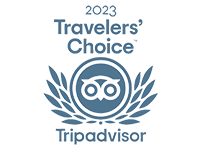Myanmar In July: Weather, Where To Go, What To See, Itinerary And FAQ

Myanmar in July offers a unique experience with the monsoon rains shaping the landscape and culture. While the weather can be unpredictable, it’s a fantastic time to explore the lush beauty of the country, enjoy vibrant festivals, and visit iconic destinations like Bagan, Mandalay, and Inle Lake. Here's your guide to making the most of Myanmar in July. Plan your Myanmar adventure with Autour Asia, Travel and Tour in Myanmar.
Table of Contents
I. Overview of the Weather in Myanmar in July
Myanmar in July marks the heart of the monsoon season, making it the second wettest month of the year. The weather in Myanmar in July is characterized by heavy, near-daily downpours that drench most of the country, with rainfall occurring on roughly half the days of the month—amounting to about 15 rainy days in total. Despite the rain, temperatures remain warm, averaging around 30°C nationwide.
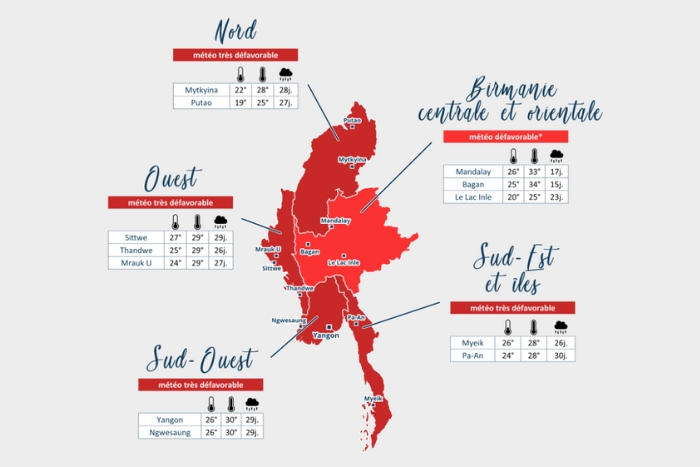
Compared to June, the weather in Myanmar in July brings slightly cooler temperatures but still sweltering conditions, particularly in the central plains, where the mercury often hovers in the mid-30s. In the cooler highland regions, such as Kalaw and Pyin Oo Lwin, temperatures range from a refreshing 24°C to the hotter 33°C found in Bagan and Mandalay. The monsoon rains make road travel in remote areas challenging and, in some cases, entirely impassable. Along the western and southern coasts, beaches are closed for the monsoon season. Travel in Myanmar in July remains feasible, but it’s wise to focus on major cities and popular tourist spots where the infrastructure is more reliable and better equipped to handle the rainy season.
Despite these challenges, exploring Myanmar in July is possible, though not without its obstacles. Visitors will find the tourist spots pleasantly uncrowded but should prepare for high humidity and travel limitations. The coasts bear the full brunt of the monsoons during this time, with intense rains and strong winds causing road washouts and closures. It's best to avoid the beaches altogether until the season passes.
II. What To Do in Myanmar in July ? Top Festivals and Events in Myanmar in July
1. Waso Full Moon Festival
What To Do in Myanmar in July ? Discover Waso Full Moon Festival, celebrated on the full moon day of Waso (the fourth month of the Burmese calendar) - normally in July, the full-moon day of Waso holds profound significance as it marks multiple pivotal events in Buddha's life: the day of his conception, his renunciation of worldly pleasures, the first sermon of Dhamma Cakka, and his display of miraculous supernatural powers.
One of the most significant and meritorious acts performed by Buddhists during Waso Full Moon Festival is offering robes to the Sangha, specifically for use during the Buddhist lent. These robes are known as Waso robes.
This time also marks the beginning of Myanmar’s three-month Buddhist Lent. During this period, monks focus deeply on meditation and studying, which prevents them from undertaking any journeys lasting more than a day. The full moon day before marks a public holiday when villagers present monks with robes, clothing, medicine, alms, and other offerings in preparation for the period ahead.
2. Chin Lone Festival
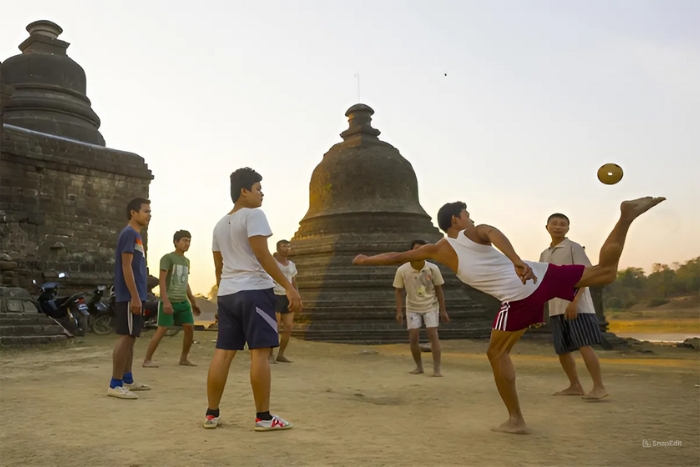
The Chin Lone Festival, one of Myanmar's most biggest festivals, takes place annually in Mandalay over the course of a full month, typically in late June or July.
Centered around the Mahamuni Pagoda, the festival features daily chin lone (cane ball) tournaments that draw players from across the country. Beyond the competitions, the event comes alive with a festive atmosphere filled with music, dance, and an array of delicious local food, making it a cultural highlight for both participants and spectators alike.
3. The Taungbyone Nat Festival
The TaungByone Nat Festival, held on the eighth waxing day of Wagaung, the fifth month of the Burmese calendar, is a lively and spiritually significant celebration just outside Mandalay. This grand event attracts mediums and spiritual guides from across Myanmar, all gathering to connect and communicate with and honor the spirits.
What To Do in Myanmar in July ? Explore the Taungbyone Festival, one of Myanmar's most renowned celebrations, held annually to honor the Taungbyone nat brothers of Taungbyone village. This dual-purpose festival also commemorates the two pagodas, Sutaungpyae constructed by King Anawrahta and the later-built Sutaungya. The pagoda festival spans two days, from the eighth to the tenth waxing day of Wagaung, while the nat festival takes place simultaneously, creating a vibrant and deeply spiritual atmosphere.
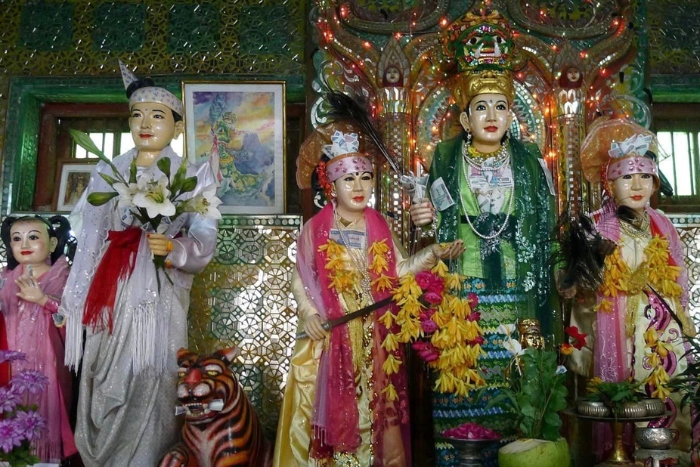
Held in August, the festival draws large crowds from across the country. Each day features unique ritual programs, with the spirit-mediums' dances being a central and highly popular highlight.
The Taungbyone Festival caters not only to devotees of the nat tradition within the framework of Burmese Theravada Buddhism but also to those seeking entertainment. Visitors can enjoy folk dramas, ceremonial dances, socializing, gambling, and drinking, making it a lively and multifaceted event that blends spirituality with festivity.
III. What to do in Myanmar in July?
1. Visit Bagan
In northern Myanmar's tourist cities, particularly Bagan, July offers a much drier experience compared to other regions. With an average of 20 dry days in the month, making it an ideal destination for this time of year. Visitors can comfortably explore the archaeological wonders without enduring the intense heat typical of other seasons. Futhermore, Myanmar in July is an excellent time to delve into the ancient ruins of Bagan, free from heavy tourist traffic or uncomfortably hot temperatures.
What To Do in Myanmar in July ? Begin your day with a stunning sunrise over Bagan’s sacred temples, an experience that sets the tone for exploring its historical wonders. For a truly unforgettable start, consider a hot air balloon ride at dawn to enjoy a panoramic view of the temple-studded plains from above. Afterward, rent a bike to freely explore the large and small temples in the area.
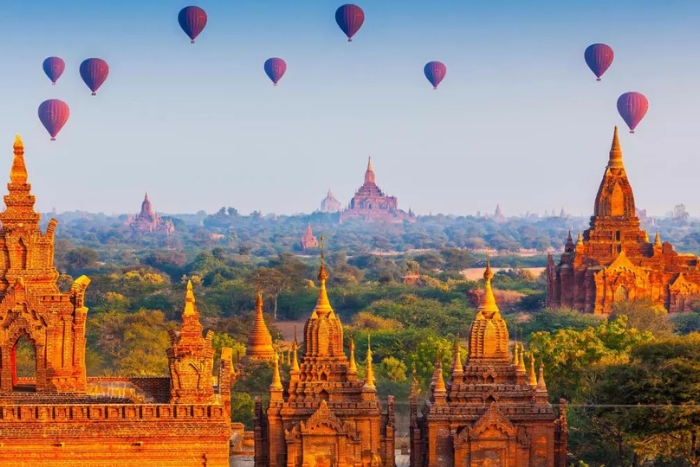
To ensure the best experience, check the weather forecast beforehand for a comfortable and dry outing. Don’t miss iconic sites like Ananda Temple, Shwezigon Temple, and many other breathtaking structures that showcase Bagan's rich heritage and architectural brilliance.
2. Discover Mandalay
Myanmar in July makes Mandalay a bit more charming, although a little wetter than Bagan. Despite more frequent and heavier rains, the city still has plenty of dry days, often with clear mornings before showers later in the day.
One of the highlights of visiting Mandalay in July is how the surrounding mountains and hills come alive, transforming into lush, green wonderlands. The scenery is far more captivating than in the dry season, making it the perfect time for nature lovers to trek through these vibrant landscapes and take in Myanmar’s natural beauty. Just be sure to pack a reliable rain jacket to stay prepared for the occasional downpour!
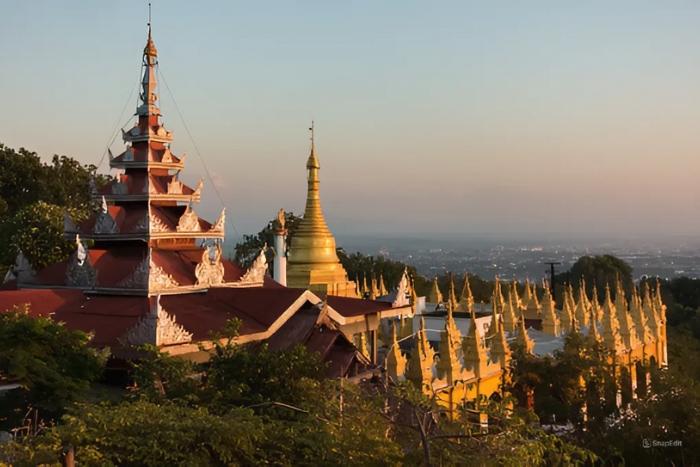
>> Myanmar in January
What To Do in Myanmar in July ? A must-visit in Myanmar in July is Mandalay Hill, home to the towering Su Taung Pyai Pagoda, the tallest in Myanmar. Reaching the top involves climbing 1,729 steps, but the panoramic views are well worth the effort.
Outside the town, head to Mingun to marvel at the magnificent white Hsinbyume Pagoda, a masterpiece in the Sagaing Region. For a refreshing escape, make your way to Pyin Oo Lwin, just 1.5 hours northeast of Mandalay. Here, the botanical gardens burst to life in July with vibrant blooming flora, offering a retreat from the bustling city.
3. Explore Inle Lake
Inle Lake is a true gem during this time of year, offering a tranquil and comfortable climate. The mornings are often shrouded in mist, giving the lake a surreal, almost magical atmosphere. While rain does occur, it’s less frequent than in southern regions, though it can sometimes make roads impassable, so it’s wise to check conditions if you're traveling by car.
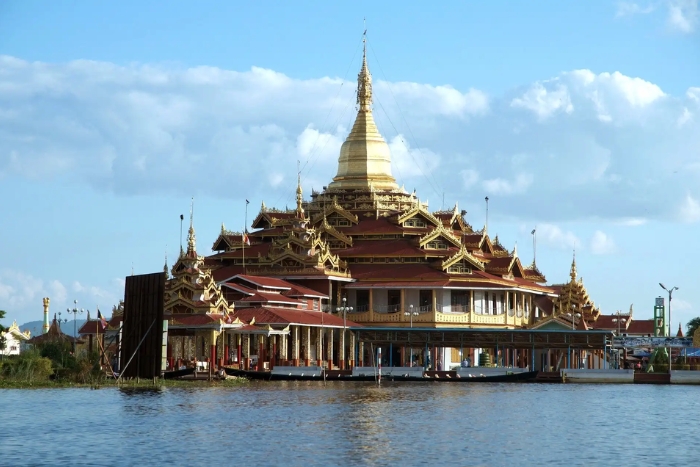
What To Do in Myanmar in July ? In the mountains surrounding Inle Lake, don’t miss the gilded Hpaung Daw U Pagoda that shimmers in gold. Also, visit the fascinating Nga Phe Kyaung Monastery, known for its unique architecture. In the late afternoon, take a scenic drive up to the Red Mountain Estate Vineyards to check out the tasting room. Enjoy a wine tasting while watching the sun set over the valley—an unforgettable experience. If the weather turns, the indoor seating area in the attached restaurant offers a cozy spot to enjoy a delicious dinner.
IV. Tips for a Better Trip to Myanmar in July
1. Safety
Due to ongoing internal conflicts in Myanmar, many regions require special permits for tourist access. As a result, it's crucial to be informed about areas that are off-limits to travelers for safety reasons.
Travel can also be challenging during this time of year due to heavy rainfall. Air travel is typically more reliable and easier than road travel. Coastal areas, especially, are prone to flooding, so it’s advisable to avoid the sea and opt for air travel during the monsoon season.
2. Currency
The local currency in Myanmar is the kyat (MMK). It’s best to carry cash, as ATMs are not available everywhere. While some larger cities accept credit cards, cash is preferred, especially in local markets. US dollars (USD) are widely accepted, and you can exchange them for kyats, but make sure to carry enough cash, as using credit cards may come with extra fees.
Although tipping is not customary, small denominations (K200, K100, or K50) are appreciated for donations at major temples.

3. Health
Before traveling, make sure your vaccinations are up to date. If you plan to visit rural areas, malaria medication is recommended. Due to the monsoon rains and high humidity, mosquito-borne diseases like dengue fever are more prevalent. Wear long sleeves, use high-quality insect repellent, and take extra precautions to protect yourself from bites.
Myanmar in July is a time of transformation, with vibrant landscapes and cultural celebrations. While the rains may pose challenges, they unveil the country’s natural beauty, offering a quieter and more intimate travel experience. Whether you're exploring the ancient ruins of Bagan, trekking through Mandalay's hills, or immersing yourself in local festivals, Myanmar in July promises unforgettable memories. Wondering what to do in Myanmar in July? Contact AUTOUR ASIA, Travel and Tour in Myanmar, and let us help you organize a tailor-made trip that meets all your expectations. Travel with peace of mind and create lasting memories with us!
>> Myanmar travel guide
>> Myanmar itinerary 10 days
>> Myanmar 2 week itinerary
>> Myanmar Packages Tours
Related travel guide
Other similar articles
CUSTOMIZABLE BY LOCAL EXPERTS
Personalized trip at the original price!
REFUND GUARANTEE
We believe in our work and promise to give you money back.
GOOD PRICE / QUALITY
95% satisfied more than expected!
24/7 LOCAL SUPPORT
We are always available online to provide assistance at any time.
Most read articles
Autour Asia is highly recommended on
Embracing the mission of "Satisfied more than expected" and providing authentic experiences, we have received numerous recommendations on reputable travel forums:






















